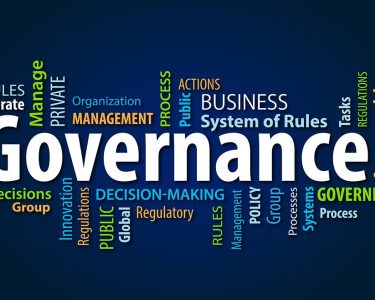America has always been a land of diverse opinions and beliefs. However, in recent years, political polarization has reached unprecedented levels. It seems like we are more divided than ever before, with people on opposite sides of the political spectrum unable to understand each other’s viewpoints or find any common ground. But does it have to be this way? Can we bridge the divide and come together as a nation? In this blog post, we will explore the causes of political polarization in America and discuss potential solutions for finding unity amidst our differences. So buckle up and join us on this journey towards building a more cohesive society!
What is political polarization?
Polarization in America has been on the rise in recent years, with partisanship becoming more entrenched and Americans feeling largely disconnected from one another. This trend poses a number of challenges, not least of which is how to bridge the divide and find common ground.
The political polarization phenomenon
Political polarization refers to the extent to which individuals hold political views that are remarkably distinct from those of their counterparts. It has long been considered a hallmark of democratic societies, but polarization in America has been on the rise in recent years. In surveys conducted since the early 2000s, researchers have found that self-identified liberals and conservatives have become increasingly divided along ideological lines, with few moderates in between (Luu & Powell, 2018).
This trend is most pronounced among Americans aged 18 to 34 years old. Among these millennials, 81% identify as Democrats orleansts while only 13% identify as Republicans or conservative (Luu & Powell, 2018). This partisan divide is even more pronounced when looking at specific policy issues: for example, 82% of Democrats say they support strong gun laws while just 43% of Republicans agree (Luu & Powell, 2018).
One possible explanation for this polarizing trend is increased partisanship and civic disengagement among American adults (Holtz-Eakin et al., 2016; Luu & Powell, 2018). More than half of all Americans say that politics doesn’t affect their daily lives very much (55%), while just 12% say
The causes of political polarization
Political polarization in America has become an issue of concern for many, with the two major political parties increasingly divided on key issues. While there are many factors contributing to this divide, some experts say that a lack of understanding and communication between the two groups is at the root of the problem.
One reason for the ideological gap between Democrats and Republicans is that each party has developed its own unique ideology over time. For example, Republicans are traditionally more conservative on fiscal issues, while Democrats are more liberal. Additionally, partisanship can play a role in polarization. When people identify with a particular party, they are more likely to view information and events through the lens of their partisan affiliation.
A number of solutions have been proposed to address America’s political polarization problem, but it will likely require a combination of approaches to be successful. One suggestion is for both parties to engage in more bipartisan dialogue and cooperation. This would help reduce partisanship and foster a greater understanding and appreciation for different points of view. In addition, campaigns should be conducted on issues instead of solely based on partisan loyalty or identity politics. This way, voters could better understand why certain policies are being proposed and could make informed decisions about who they support in elections. Finally, educators must work to create open-minded students who can appreciate different perspectives and understand how arguments can be made from multiple angles.
The consequences of political polarization
The political polarization in America has resulted in a lack of civility and compromise. This has caused significant divides among the American people, making it difficult to find common ground on important issues. Political polarization has also led to gridlock in Congress, which has prevented progress on important issues. There are several ways that we can bridge the divide and find common ground. First, we need to recognize that we have different perspectives, and try to understand why each person is supporting their own candidate. Second, we need to open up our dialogues and discussions to include more perspectives. Third, we need to be willing to compromise on our positions in order for us to make progress. Finally, we need to remain engaged in politics both locally and nationally so that we can continue shaping the future of our country.
Can we bridge the divide and find common ground?
Political polarization in America has been on the rise for many years, and it seems to be getting worse by the day. But is this really a bad thing? Or is there another way to look at it that might lead to some common ground being found?
Some people argue that the increased political polarization is actually good because it helps us identify important issues that need to be addressed. For example, if we were all working together towards solving a problem, but half of us disagreed on what the problem was, we would not be able to come up with a solution. However, when we are divided into two camps, each with our own set of beliefs, we are much more likely to find a solution.
This is why some people advocate for more political debate and discussion. It can help to open people’s eyes and minds to new ideas and ways of thinking. After all, if we can’t even agree on the basics – like who should be running things – then how are we going to be able to come up with solutions that work for everyone?
On the other hand, others believe that increased political polarization is actually bad because it leads to division and animosity. Instead of working together towards finding common solutions, politicians and citizens end up fighting one another instead. This only makes things worse for everyone involved.
So what does this all mean for us as individuals? We need to stay engaged in politics and keep an open mind about how government can help
Conclusion
It is clear that the political polarization in America has reached a fever pitch. It seems like there is no middle ground, and both sides seem unwilling to budge an inch on their positions. What can be done to bridge the divide? I believe that it starts with looking at the situation from all sides. Yes, some of the policies of President Trump are controversial, but one must also consider how Obama fared in similar circumstances. Arguing about specifics does nothing to move us closer to a resolution. Instead, we need to find common ground by understanding each other better and fostering a mutual respect for our differences. Only then will we be able to start finding solutions that work for everyone involved.




